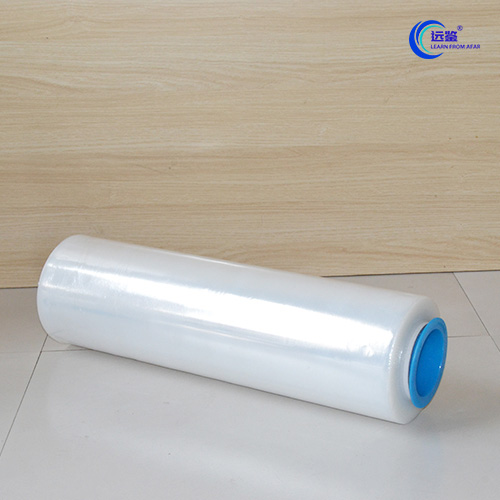Transparent PE stretch winding film
As the number of C atoms in the material comonomer increases, the branch chain length increases, the crystallinity decreases, and the resulting copolymer "entanglement or twisting" effect increases, resulting in an increase in elongation, puncture strength, and tear strength. Metallocene polyethylene is a highly structured and regular polymer with a narrow molecular weight distribution, which can accurately control the physical properties of the polymer, thus further improving its performance; Due to the narrow molecular weight distribution and processing range of MPE, it is difficult to control the processing conditions. Usually, 5% LDPE is added to reduce the viscosity of the melt and increase the flatness of the stretching film.
The price of metallocene polyethylene is also high. In order to reduce costs, metallocene polyethylene is usually used in combination with butene-1LLDPE, but not all butene-1LLDPE can be paired with it, so there should be a choice. Machine used stretch films often use hexene-1 and octene-1 copolymer polyethylene materials, which are easy to process and can meet various packaging requirements. Due to the low stretching rate, manual packaging of stretch film often uses butene-1 polyethylene material.
The material density also affects the performance of the stretching film. As the density increases, the orientation degree increases, the flatness is good, the longitudinal elongation increases, and the yield strength increases. However, the transverse tear strength, puncture strength, and transmittance all decrease. Therefore, considering all aspects of performance, an appropriate amount of medium density linear polyethylene (LMDPE) is often added to the non adhesive layer. Adding LMDPE can also reduce the friction coefficient of the non adhesive layer, avoiding the adhesion between packaged pallets.
The influence of cooling roller temperature. As the temperature of the cooling roller increases, the yield strength increases, but other properties decrease. Therefore, it is generally advisable to control the temperature of the cooling roller between 20 ℃ and 30 ℃. The tension of the casting line affects the flatness and winding tightness of the stretching film. If PIB or its masterbatch is used as the adhesive layer, it also affects the migration of PIB and reduces the final viscosity of the stretching film. The tension is generally not greater than 10kg. If the stress is too high, it will remain in the film roll, leading to a decrease in elongation and other properties, which can easily cause film breakage.


